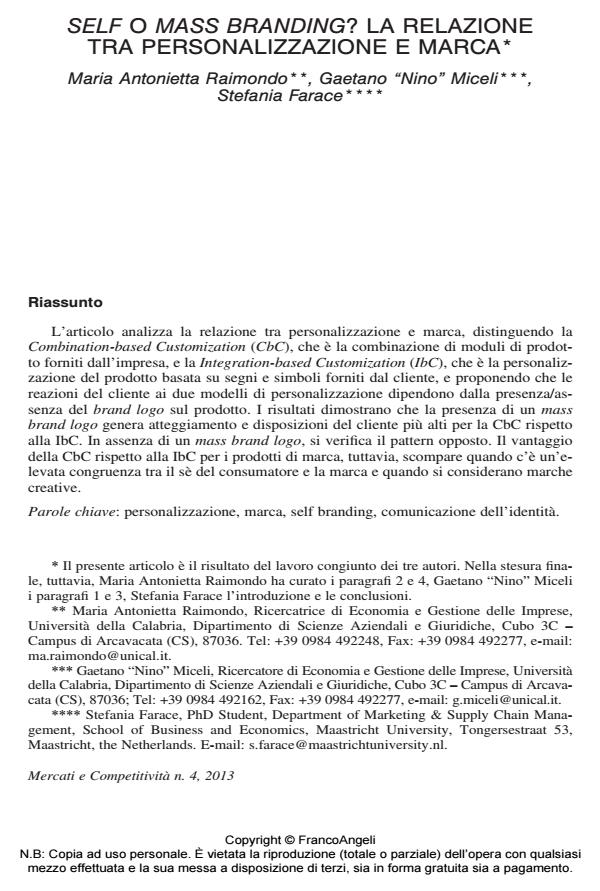Self or mass branding? The relation between customization and brand
Journal title MERCATI E COMPETITIVITÀ
Author/s Maria Antonietta Raimondo, Gaetano "Nino" Miceli, Stefania Farace
Publishing Year 2013 Issue 2013/4
Language Italian Pages 23 P. 149-171 File size 751 KB
DOI 10.3280/MC2013-004008
DOI is like a bar code for intellectual property: to have more infomation
click here
Below, you can see the article first page
If you want to buy this article in PDF format, you can do it, following the instructions to buy download credits

FrancoAngeli is member of Publishers International Linking Association, Inc (PILA), a not-for-profit association which run the CrossRef service enabling links to and from online scholarly content.
This paper examines the relation between customization and brand. The authors distinguish Combination-based Customization (CbC), which is the combination of product modules provided by the company, and Integration-based Customization (IbC), which is product personalization by means of signs and symbols provided by the customer. The authors propose that customer reactions to CbC and IbC depend on the presence/absence of the brand logo upon the product. Results demonstrate that the presence of a mass brand logo generates higher customer attitude and dispositions toward CbC than IbC. In the absence of a mass brand logo, the opposite pattern holds. However, the advantage of CbC over IbC for branded products disappears when there is high congruence between the self and the brand and when creative brands are considered.
Keywords: Customization, brand, self branding, identity communication.
- User-Generated Systems of Signs and Meanings in Product Customization: Taxonomies and Research Directions Maria Antonietta Raimondo, Stefania Farace, Gaetano "Nino" Miceli, in MERCATI & COMPETITIVITÀ 2/2018 pp.61
DOI: 10.3280/MC2018-002004
Maria Antonietta Raimondo, Gaetano "Nino" Miceli, Stefania Farace, Self o mass branding? La relazione tra personalizzazione e marca in "MERCATI E COMPETITIVITÀ" 4/2013, pp 149-171, DOI: 10.3280/MC2013-004008